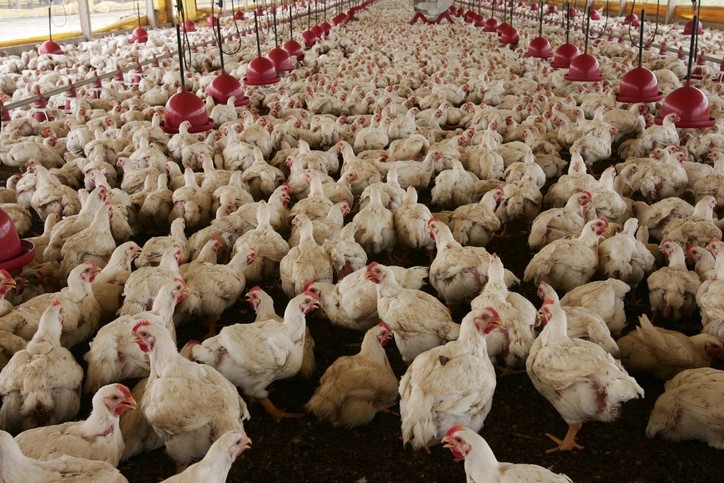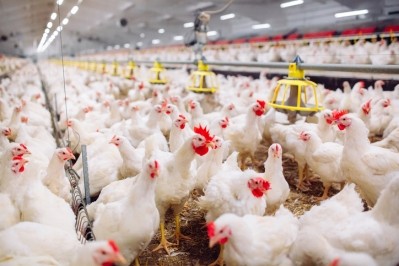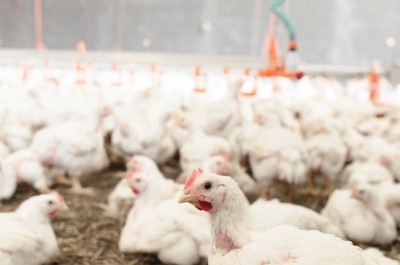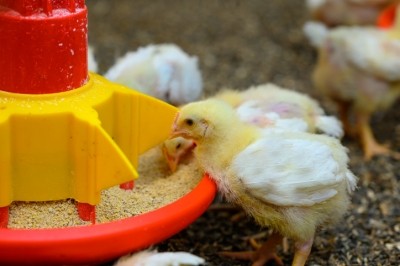Australian team sees no response from broiler chickens to dietary leucine enrichment

Branched chain amino acids (BCAA) include isoleucine, leucine, and valine.
“The outcomes suggest there are no real benefits in exceeding the ratios of leucine 109, isoleucine 67, valine 77 relative to lysine proposed by Baker and Han (1994).
"That broiler chickens failed to respond to elevated BCAA inclusions appeared to be due to both BCAA antagonisms coupled with diverse responses in amino acid digestibility coefficients. These diverse digestibility responses were, in turn, reflected in free amino acid plasma concentrations. Also, elevated leucine levels depressed energy utilization,” according to a paper published in Animal Feed Science and Technology.
The premise
Previous work has indicated that broiler chickens may benefit from elevated dietary leucine concentrations, said the Australia based researchers, adding that such an approach might require higher isoleucine and valine inclusions also to counteract antagonistic BCAA interactions.
They cited a study by Yamazaki et al. (2006) whereby increased concentrations of isoleucine, leucine and valine in 190 g/kg CP maize/soybean meal broiler diets resulted in significant improvements of 20.0% in weight gain and 6.56% in feed efficiency in birds offered these diets from 7 to 21 days post-hatch.
Chen et al. (2016) offered young birds 226 g/kg CP maize-soy diets containing 14.7 g/kg lysine with three levels of BCAA concentrations. Relative to lysine, this resulted in ratios of 79, 132 and 186 for leucine, 46, 77 and 109 for isoleucine and 54, 91 and 128 for valine, noted the authors. The high BCAA levels generated the greatest weigh gain; whereas, the intermediate BCAA levels generated the most efficient FCR and highest breast meat yields, and these levels comfortably exceed standard recommendations, they said.
They also referenced research by Erwan et al. (2011), which reported that the addition of 5g/kg l-leucine to 200 and 180g/kg CP diets significantly reduced carcass fat composition by 16.4% in broiler chickens at 42 days post-hatch. The leucine to lysine ratio increased from 139 to 183 in that study.
The methodology
Given the increased implementation of reduced-crude protein (CP) diets, the team said their study was designed to test the hypotheses that elevated leucine inclusions will benefit the performance of broiler chickens offered wheat-based, reduced-CP diets (190 g/kg) from 7 to 28 days post-hatch, provided there are concomitant elevations in isoleucine and valine inclusions.
The researchers allocated 378 male Ross broilers to nine dietary treatments, each with seven replicate cages and six birds in each.
All diets were wheat-based with 190 g/kg CP. The dietary treatments comprised 3 leucine inclusions (12.71, 15.02, 17.33 g/kg) and 3 isoleucine plus valine inclusions (17.21, 20.32, 23.45 g/kg), they added.
The authors outlined the parameters evaluated, which included bird growth performance, relative abdominal fat-pad weights, nutrient utilization, apparent jejunal and ileal digestibility coefficients and disappearance rates of starch, protein (N), amino acids and free amino acid concentrations in systemic plasma.
The findings
Elevated BCAA inclusions did not enhance growth performance; indeed, elevating isoleucine plus valine from 17.21 to 20.32 g/kg in the 15.02 g/kg leucine diet significantly compromised weight gain by 6.82%, they found.
However, elevating isoleucine plus valine inclusions from 17.21 to 20.32 g/kg decreased relative fat-pad weights by 8.49%, noted the researchers.
Elevating leucine levels significantly depressed energy utilization, they said, while dietary enrichment with leucine had diverse impacts on amino acid digestibility coefficients coupled with free amino acid plasma concentrations.
Increasing dietary leucine concentrations improved ileal digestibility of leucine by 4.74% but also significantly increased ileal digestibility coefficients of another 10 amino acids by an average of 3.37% ranging from 1.60% (methionine) to 4.96% (threonine).
“Overall, elevations of BCAA in wheat-based, reduced-CP diets did not advantage broiler growth performance,” concluded the researchers.
They said it was reasonable to attribute that growth performance outcome, at least in part, to BCAA antagonisms.
“Elevating leucine inclusions significantly decreased isoleucine plasma levels by up to 21.2% and blunted the impact of elevated isoleucine plus valine on free valine plasma levels may be indicative of α-keto acid dehydrogenase activity triggering post-enteral BCAA antagonisms. However, the diverse, interactive impacts of dietary treatments on free plasma concentrations of another ten amino acids was not anticipated and may have had deleterious effects on broiler growth performance.”














